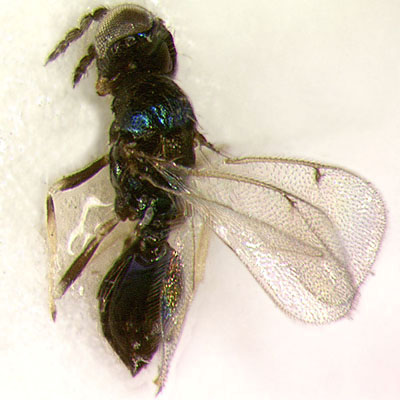 |
|||||||||||||||||||||||||||||||||||||||||||||||||||||||||||||||||||||||||||||||||||||||||||||||
|
|
Home | Open the Key | References | ||||||||||||||||||||||||||||||||||||||||||||||||||||||||||||||||||||||||||||||||||||||||||||
|
|||||||||||||||||||||||||||||||||||||||||||||||||||||||||||||||||||||||||||||||||||||||||||||||
Classification
|
|||||||||||||||||||||||||||||||||||||||||||||||||||||||||||||||||||||||||||||||||||||||||||||||
Subfamily Tribe |
Entedonini |
||||||||||||||||||||||||||||||||||||||||||||||||||||||||||||||||||||||||||||||||||||||||||||||
Diagnosis
|
|||||||||||||||||||||||||||||||||||||||||||||||||||||||||||||||||||||||||||||||||||||||||||||||
|
|
||||||||||||||||||||||||||||||||||||||||||||||||||||||||||||||||||||||||||||||||||||||||||||||
| |
|||||||||||||||||||||||||||||||||||||||||||||||||||||||||||||||||||||||||||||||||||||||||||||||
Distribution |
|||||||||||||||||||||||||||||||||||||||||||||||||||||||||||||||||||||||||||||||||||||||||||||||
|
Proacrias is a small genus (4 species described) present in the Neotropical region (Noyes, 2001). |
|||||||||||||||||||||||||||||||||||||||||||||||||||||||||||||||||||||||||||||||||||||||||||||||
| |
|||||||||||||||||||||||||||||||||||||||||||||||||||||||||||||||||||||||||||||||||||||||||||||||
Biology |
|||||||||||||||||||||||||||||||||||||||||||||||||||||||||||||||||||||||||||||||||||||||||||||||
|
Proacrias species are parasitoids of Lepidoptera and Diptera leafminers. In particular, P. thysanoides (De Santis) and P. xenodice (Walker) were recorded on agromyzids (Noyes, 2001). |
|||||||||||||||||||||||||||||||||||||||||||||||||||||||||||||||||||||||||||||||||||||||||||||||
| |
|||||||||||||||||||||||||||||||||||||||||||||||||||||||||||||||||||||||||||||||||||||||||||||||
| |
|||||||||||||||||||||||||||||||||||||||||||||||||||||||||||||||||||||||||||||||||||||||||||||||
Comments |
|||||||||||||||||||||||||||||||||||||||||||||||||||||||||||||||||||||||||||||||||||||||||||||||
|
Proacrias belongs to the subfamily
Entedoninae by having 2 setae on
submarginal vein, scutellum with a pair of setae, fronto-facial
suture distinctly separated from anterior ocellus and male scape
with sensory pores placed at the ventral edge.
Important characters to recognise Proacrias can be the combination of the propodeum with 2 median carinae broadly diverging in posterior half of propodeum, the postmarginal vein slightly longer than stigmal vein and the distinct petiole. These characters may be used to separate particularly Proacrias from Achrysocharoides, Neochrysocharis, Chrysocharis, Asecodes, Trisecodes and Closterocerus. Proacrias usually has a distinct pronotal carina: among Entedoninae with pronotum carinate Apleurotropis and Pleurotroppopsis may be distinguished from Proacrias by having mesoscutum with median longitudinal groove placed posteriorly and a single propodeal median carina, Zaommomentedon Girault by having mesoscutum and scutellum with complete and distinct median groove, Platocharis Kerrich by having diverging submedian carinae or plicae and transverse carina between submedian carina and plica, Kratoysma Boucek by having scutellum strongly sculptured with broad median groove anteriorly. Proacrias will be most difficult to separate from Pediobius. Both genera have the propodeum with paired median carinae which diverge posteriorly. Both genera have a plica on the propodeum, although this is generally more distinct in Pediobius. Pediobius always has a distinct collar on the pronotum, this collar can be present or absent in Proacrias. Proacrias has 2 funicular segments, while Pediobius usually has funicle 3-segmented. In Pediobius the postmarginal vein is quite short; in Proacrias the postmarginal vein is variable, but can be longer than the stigmal vein. One character that seems to be able to separate these genera is that in Pediobius the median carinae on the propodeum, after diverging, continue without turning to the posterior margin of the propodeum, there is a complete carina on the posterior margin of the propodeum between the median carina and the plica, and the posterior margin of the propodeum is extended into a small neck (nucha) medially. In Proacrias the median carinae turn back posteriorly rather abruptly and define a trapezoidal area, there is not a carina along the posterior margin of the propodeum, and the posterior margin of the propodeum is not extended into a neck medially. A key to the 4 species is provided by Boucek (1977). |
|||||||||||||||||||||||||||||||||||||||||||||||||||||||||||||||||||||||||||||||||||||||||||||||

